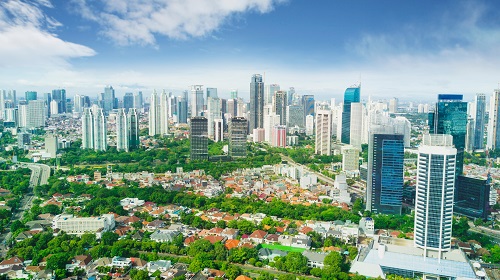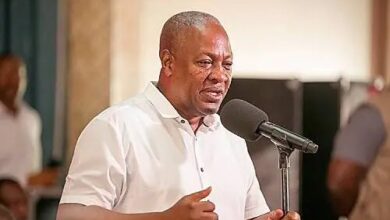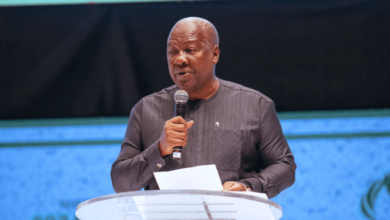The Ghanaian economy is gradually recovering from the severe macroeconomic crisis of 2022. GDP growth is holding up better than expected and inflation has started to fall even though it remains too high.
In terms of public finances, progress is also encouraging. In addition to satisfactory budget implementation during the first six months of the year, the authorities completed their domestic debt restructuring operation. However, the country remains in default on its external debt. Despite the support from the FMI, it also lacks a cushion to protect it from a possible new external shock.
After a nightmarish 2022, which ended with the government defaulting on its external debt, Ghana has embarked on an all-out race to get its economy back on its feet. To achieve this, it will be supported by the IMF.
The extended 3-year credit facility, amounting to USD3bn, and the associated programme thus aim to strengthen macroeconomic stability and restore debt sustainability.
The first review has just been concluded. Results were satisfactory, paving the way for. a second USD 600 million disbursement once the Ghana’s authorities and their bilateral creditors have reached an agreement on external debt restructuring. Optimism is therefore slowly returning. However, caution remains necessary as long as the pitfalls remain significant.
Debt restructuring: some progress but still no overall agreement
The situation of the public finances was unsustainable, with debt reaching 88% of GDP and nearly half of the budgetary resources in 2022 dedicated solely to interest payments. In addition, Ghana was set apart from most of its African peers by overwhelming domestic debt (53% of debt stock but 73% of interest).
It was therefore necessary to restructure the entire debt and not only that contracted with external creditors, as has been the norm during previous debt crises in low-income countries.
A first step has just been completed. After an exchange of domestic debt securities in February, the government recently renegotiated debt held by pension funds, dollar-denominated bonds and eligible securities on the Ghana Cocoa Board’s cocoa.
In total, half of the domestic debt stock will have been exchanged for bonds at lower rates and longer maturities. In addition, the central bank cancelled 50% of the government securities it holds, which represent 25% of domestic debt. This financing had become massive and expensive in recent years.
The primary aim of restructuring domestic debt is to relieve public finances by reducing debt servicing. The effects on the debt stock not held by the central bank are fairly limited.
In the absence of an agreement on external debt, public debt should continue to rise slightly, to over 90% of GDP this year, before starting to stabilise from 2024 onwards (Chart 1), provided that the fiscal consolidation policy continues and the exchange rate stabilises (two realistic but fragile assumptions).
As far as external debt is concerned, negotiations with official creditors could quickly be concluded. On the other hand, those undertaken with private creditors remain uncertain. Of the USD 20 billion of external debt eligible for restructuring, 73% is held by the latter, the vast majority in the form of euro bonds (USD 13.1 bn compared with USD 5.4 billion for official bilateral debt). In addition, the effort required is significant.
The FMI estimates the external financing gap at USD 10 billion over the 2023-2026 periods, which the restructuring of debt should implicitly cover. Against this backdrop, the government’s goal of completing the whole process by the end of the year seems optimistic.
Fiscal position: some positive results to be put into perspective
Debt restructuring will be a prerequisite but not enough to restore its sustainability. To reduce public debt to 55% of GDP by 2028, it will also be necessary to continue the ambitious fiscal consolidation strategy set by the FMI, namely an adjustment of 5.1% of GDP over the 2023-2026 period, thanks to a 3pp increase in budget revenue, and a 2.1pp reduction in non-interest expenditure.
Thus, the primary balance would return to surplus again from 2024, at 0.5% of GDP compared with 3.6% in 2022, before reaching 1.5% of GDP in 2025 and 2026. However, since 2010, Ghana has only managed to generate primary surpluses twice (in 2015 and 2017).
The results of budget execution for the first six months of the year were therefore eagerly awaited. They were satisfactory, but not completely reassuring. On the revenue side, performance is slightly below the new budget targets due to a sharp decline in oil revenue. Up 56% y/y, they nevertheless showed higher growth than nominal GDP, thanks in particular to the increase in VAT from 12.5% to 15%.
On the expenditure side, the increase in primary expenditure was moderate (+29%), but this was due to financing constraints that forced the government to drastically cut investment (stable y/y but less than half the target), in favour of a sharp increase in the wage bill (+40% y/y). However, this dynamic is not sustainable.
The government is now forecasting a primary deficit of 0.5% of GDP for 2023, compared with a surplus of 0.7% in the initial financing bill and 1.1% for the first six months of the year. Thus, the budget deficit would fall to 6.4% of GDP from 11.8% in 2022.
In all likelihood, it could be significantly lower due to the suspension of payment of virtually all interest on external debt. Over a full year, this “gain” could amount to almost 2 points of GDP, which would bring the budget deficit below 5% of GDP in 2023 and 2024 if no agreement is reached with external creditors.
However, the authorities’ ability to stay the course is questionable. Even if it increases, tax revenue will remain below 13% of GDP.
This gives very little room for manoeuvre. Yet, financing conditions are deteriorating. In fact, the government is forced to issue short-term securities at rates that now fluctuate between 28% and 32% (compared with a range of 19-27% in April).
More than 80% of government financing needs will have to be covered locally this year. The interest burden on domestic debt is therefore set to rise in the coming months, absorbing a large part of the benefits from the restructuring. Above all, general elections will be held in 2024, giving rise to fears of possible budgetary slippages, as was the case in the past, even if the tutelage of the IMF should limit this risk.
Growth: between resilience and weaknesses
It is hardly surprising to see economic activity weaken in the context of this debt crisis. However, it has not broken down so far. After 3.1% in 2022 and 5.1% in 2021, growth once again surprised in H1 (+3.2%) thanks to the good performance of the agricultural sector (+6.2%) and services (+6.3%).
The government’s forecast of 1.5% should therefore be exceeded, even if a deceleration is expected in H2 due to the persistence of strong headwinds (budgetary consolidation, restrictive monetary environment). In total, growth is expected to reach 2.5% this year before gradually recovering from 2024 onwards, subject to financial stabilisation, which is far from assured.
Inflation is falling, but it remains very high at 40.1%, compared to a peak of more than 50% between the end of 2022 and the beginning of 2023 (Chart2). Inflationary pressures will remain strong mainly due to exchange rate volatility.
In 2022, the cedi fell sharply, losing up to over 50% of its value against the US dollar at the peak of the crisis, before recovering in December when the IMF agreement was announced. Since then, the situation has stabilised, but Ghana’s external accounts remain very fragile.
Despite a trade surplus in H1 and the suspension of payment of external debt servicing (1.2% of GDP just for non-payment of interest on Eurobonds in 2023), forex reserves have fallen further since the beginning of the year to cover only 1.5 months of imports of goods and services. In the very short term, the disbursement of a new tranche of the IMF programme should somewhat ease the pressures on external liquidity.
But with a coverage ratio that should just exceed two months of imports at the end of the year, Ghana is still exposed to a further exchange rate shock.
If this were the case, the central bank would have no choice but to tighten its monetary policy even further (the key policy rate has increased from 14.5% in 2022 February to 30% currently), which would weaken the private sector (the ratio of non-performing loans reached 20% in August 2023 compared with 14.2% at the beginning of 2022).
After posting substantial losses in Q4 2022, the banking sector returned to profit in Q1 2023. In addition, the monetary authorities gave banks four years to restore their solvency ratio. It remains above prudential standards at 14.2%, but its sharp fall (19.4% in June 2022) nevertheless leaves banks more vulnerable to an increase in credit risk.
Disclaimer: Ahotoronline.com is not liable for any damages resulting from the use of this information Stéphane Alby: Economic research portal.




